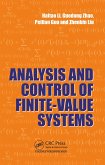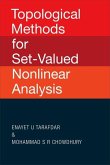This book tackles the complexities of integer-valued time series analysis, focusing on over-dispersion, excess zeros, and non-stationarity. It explores high-ordered INAR(p) models with diverse thinning mechanisms and innovation distributions, finding CML superior for inference. Addressing periodicity, harmonic functions are introduced for COVID-19 data. Novel BINAR(1) models with BPWE and SPWE innovations are applied to stock transactions, while new BPGL and SPGL bivariate distributions analyse crime data. The book derives methodologies, tests performance via simulation, and provides real-life applications, filling a gap in existing literature. This comprehensive work significantly advances the field of integer-valued time series analysis by addressing key challenges such as over-dispersion and periodicity. The detailed exploration of high-ordered INAR(p) models under various thinning mechanisms and innovation distributions provides valuable insights into their performance, with the clear outperformance of the CML inferential method offering practical guidance for researchers. The innovative incorporation of harmonic functions to model the periodic nature of the COVID-19 data in Mauritius demonstrates a crucial adaptation to real-world phenomena. Furthermore, the development and application of novel BINAR(1) models and bivariate distributions like BPGL and SPGL expand the analytical toolkit for understanding the relationships between multiple integer-valued series, exemplified by their application to stock transactions and crime data. By deriving new methodologies, rigorously testing their performance through simulation, and illustrating their utility with diverse real-life applications, this book offers substantial theoretical and practical contributions to the field, addressing limitations in existing literature. The target audience includes researchers, statisticians, and practitioners working with count data and time series analysis in fields like econometrics, finance, epidemiology, and criminology.
Bitte wählen Sie Ihr Anliegen aus.
Rechnungen
Retourenschein anfordern
Bestellstatus
Storno








